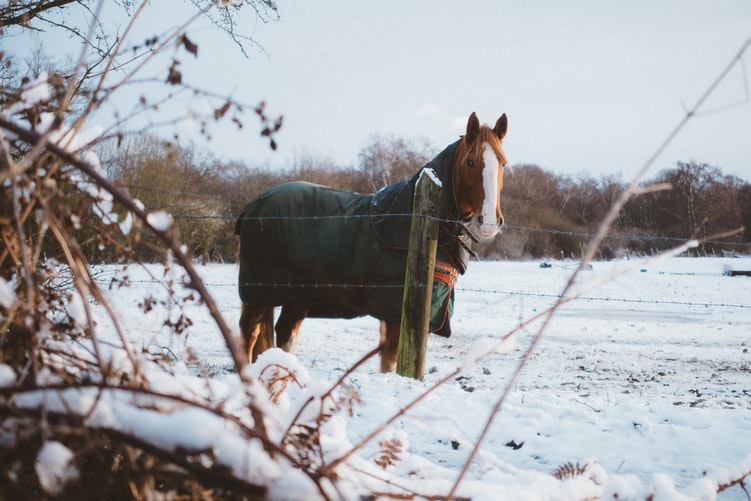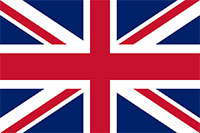The evenings are drawing in, trees are slowly changing colour and the hedgerows are bursting with blackberries. Autumn is here and that means it won’t be long before we’re preparing for the clocks to change and the first frosts to arrive. For horse owners, now is the perfect time to plan for the new season to ensure you and your horse thrive this winter.
Even though it’s tempting to enjoy the last light evenings and warm weekends, planning ahead will make life easier. You don’t want to wait until the first evening that it’s too dark to change rugs in the stable to find out that the light needs a new bulb! A little bit of preparation will mean you’re ready for whatever the winter brings and help keep your stable management routine running smoothly.
- Get on top of rugs and clipping
Summer means long, mild days and plenty of sunshine. Even if the forecast does bring rain it tends to be warm and sometimes even welcome, rather than cold and miserable. That might mean you haven’t looked at your turnout rugs since early spring! Now is a good time to pull them out and check to see if any rugs need repairing, reproofing or washing. The same goes for thick stable rugs which have been stored since last winter.
We hate to mention the dreaded ‘c’ word just yet, but if your horse is in hard work over winter, it may well need clipping to prevent sweating causing sores and chills. If you have your own set of clippers, then check to see if the blades need sharpening. If they’re allowed to get too blunt, they will tug and pull on the horse’s coat, so why not send them off now so they’re back and ready when that fluffy coat appears. If you get a professional in to do it for you, make a note in your calendar to book them in before everyone else remembers and they’re suddenly very busy!
Finally, if you’re rooting around in the tack room or yard for clippers and rugs, why not review your winter grooming kit. Do you need to stock up on any creams and potions before the mud arrives, or dig out old towels to dry legs? Again, a little bit of planning might make a huge difference if you get stuck in a freezing downpour a few months down the line.
2. Prepare your yard for cold weather
If your horses live in during the winter months then your yard is likely to become a hub of activity, often after darkness has fallen. As we mentioned in the introduction, waiting until things break or don’t work to find they need fixing will be very frustrating, so why not give your yard a winter MOT?
Prepare boxes by digging out old bedding, checking rubber matting and flooring, disinfecting them and then drying them out. Check the lights work, windows are intact and will open for ventilation, door bolts work as they should and tie up rings have bailer twine. If you have automatic drinkers and built-in feed mangers give them a scrub to remove dust and dirt.
Check all your water pipes have lagging around them to stop them freezing and make sure you have salt or grit to spread on the floor if we have a hard winter. A snow shovel is a good investment, particularly if you live in the north of the country or on high ground.
3. Make a winter-ready feeding plan
Forage should form the majority of your horse’s feed at all times of year, but it’s essential in winter – and here’s why. The equine hindgut acts like an internal central heating system for horses, and a very effective one too. When the large intestine breaks down fibre it produces heat, keeping them warm from the inside out. That’s why it’s important to feed plenty of forage in the winter months and not rely on extra rations of hard feed to ‘keep them warm’. For native breeds, those roughed off for a holiday and unclipped horses and ponies, 24/7 access to forage in a well-draining field (perhaps with shelter in case of heavy rain and wind) can often be enough to keep them happy and healthy throughout a normal UK winter. As grass quality and growth will drop in winter, dried forage should always be available ad lib.
Of course, if your horse is in medium to hard work, or is a veteran or a less hardy breed, additional feed and supplementation may be needed to keep them healthy in winter. If you’re not sure what your horse’s nutritional needs are in the colder months, why not chat to an equine nutritionist to see what they advise? Horses have evolved to gradually gain weight in spring and summer before losing it as food sources become scarcer during the colder months of the year. The excellent nutrition provided to most domesticated equines means they are at risk of obesity if that chance to slim down over winter is taken away, which is worth bearing in mind if you’re worried about your horse’s weight. Could losing a few kilos over winter actually be good for your horse?
Older horses who may have poor teeth can struggle with long stem forage and may benefit from soaked feeds to keep their condition up. It’s also worth remembering that older horses can be at risk of impaction colic when the temperatures drop below freezing at night. Their teeth may be sensitive to the chill of near-frozen water and lead to them becoming dehydrated. A kettle on the yard enables you to mix in hot water to make the temperature more palatable and help them drink more easily.
4. Prepare for disruptive weather!
It’s a tough job for us to keep horses fit and well during the winter (all thanks to mud, rain, short days, and dark evenings), but adverse weather conditions can make it near impossible. If your horse is in work or relies on turnout for movement during winter, it’s worth devising a plan in case of snow or prolonged low temperatures. That might include boxing them to all-weather gallops or a beach (if you’re near the coast!), lunging and long reining in the school to vary their routine, turning them out in the school or lunge pen and even hydrotherapy sessions. If their movement is restricted it will have a physiological as well as mental impact, so be prepared.
If you’re lucky enough to have access to a TheraPlate during the cold and dark of winter, you will find it a useful tool to support horse health and wellbeing. TheraPlate uses Vortex Wave Circulation Therapy to promote blood circulation and is used by many equestrians over winter to keep on top of their horses’ health and performance and support those recovering from injury. A US-based study found that TheraPlate might help minimise muscle loss in horses on box rest, so it could be an excellent secret weapon if we get a long spell of cold weather which confines horses to the yard.
For more information on the TheraPlate and how you could use it for your horse this winter, please drop us a line at hello@theraplateltd.com or 0800 955 2016.




Recent Comments